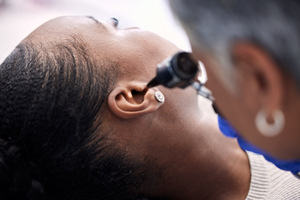Physical Exam Near Me
Own a clinic? Add your location.
Help patients book appointments with you on Solv. It's free!
1 instant-book location

Integrative Wellness Center
Integrative Wellness Center
Med Save Urgent Care
Med Save Urgent Care

CVS MinuteClinic, CVS MinuteClinic
CVS MinuteClinic

CVS MinuteClinic, CVS MinuteClinic
CVS MinuteClinic
MedSave Clinic
MedSave Clinic
Walk In Urgent Care, Columbus - N. High Street
Walk In Urgent Care
Walk In Urgent Care, Columbus North
Walk In Urgent Care
Copc Cardiac Testing
Copc Cardiac Testing
Polaris Urgent Care, Polaris Parkway
Polaris Urgent Care

MinuteClinic® at CVS®, S Old State Rd, Lewis Center
MinuteClinic® at CVS®

MinuteClinic® at CVS®, S Cleveland Ave, Westerville
MinuteClinic® at CVS®

United Urgent Care
United Urgent Care

MinuteClinic® at CVS®, Sawmill Rd, Dublin
MinuteClinic® at CVS®
Close to Home Center
Close to Home Center

MinuteClinic® at CVS®, W Henderson Rd, Upper Arlington
MinuteClinic® at CVS®

CVS MinuteClinic, CVS MinuteClinic
CVS MinuteClinic

CareFirst Urgent Care, Westerville Plaza
CareFirst Urgent Care
Close To Home Center
Close To Home Center
Own a clinic? Add your location.
Help patients book appointments with you on Solv. It's free!
About Physical Exam
A physical examination is usually performed as part of a routine checkup with your doctor. Knowing more about what happens during a physical exam can help you prepare for your next medical appointment.
Physical examination
A physical exam is when your healthcare provider physically examines and studies your body to find out whether or not you have a physical health problem. According to the National Library of Medicine (NLM), a physical checkup usually includes four components: inspection, palpation, auscultation, and percussion.
During the inspection, your doctor looks at your body for problems such as skin irregularities. Palpation involves feeling your body with fingers or hands, such as when your doctor feels for a lump or mass reports the NLM.
Auscultation is when your doctor listens to sounds, such as the sound of your heartbeat. Percussion involves producing sounds, such as tapping on specific areas of your body. This is usually done to determine the size and consistency of your organs, or the presence or absence of fluids in certain areas, adds the NLM.
The purpose of an annual physical exam
According to the NLM, an annual physical exam can help you detect health problems you may not know about and help you avoid future health problems.
purpose of an annual physical exam is to screen you for diseases like cancer and determine whether you are at risk for certain health problems like diabetes. An annual physical exam also gives you the opportunity to stay up to date on vaccinations and other preventive health services and make positive changes to your lifestyle that improve your overall health, notes the NLM. Another benefit of having a yearly physical assessment is being able to maintain continuous coordination with your doctor in the event you develop an illness or chronic condition.
How to prepare for a physical examination
Arriving at your appointment prepared can help you make the most of your visit and prevent you from having unnecessary follow-ups with your doctor, notes the NLM.
First, review your family medical history and be prepared to talk about certain health issues that run in your family, such as high blood pressure, cancer, and diabetes. Your doctor may use this information to assess whether you’re at risk for these same health problems, reports the NLM.
Next, the NLM recommends checking to see whether you are due for any general screenings or vaccinations. If you’re not sure, call your healthcare provider ahead of time so you can dress appropriately or make special arrangements in the event you need to undergo certain screenings.
Lastly, the NLM suggests writing down a list of issues and questions to mention during your appointment. For example, if you’ve been experiencing any new or different symptoms, write these down so your doctor can examine you for related health problems.
How a physical examination is performed
According to the NLM, the way your physical exam is performed will depend mainly on your gender and age due to differences in anatomy and health concerns that affect certain age groups.
Male examination
Males between the ages of 18 and 39 usually have their height, weight, and body mass index (BMI) checked at every exam, reports the NLM. Males in this age group may be asked about mental health concerns such as depression, and about their lifestyle behaviors surrounding nutrition, exercise, and substance use. They may also be screened for blood pressure, cholesterol, diabetes, and heart disease.
Males between the ages of 40 and 64 receive the same services as males aged 18 to 39, along with screenings for colorectal cancer, lung cancer, prostate cancer, and osteoporosis, reports the NLM. Men aged 65 and older may also be asked about the medications they are taking, and whether they have recently experienced any falls.
Female examination
Females between the ages of 18 and 39 will have their height, weight, and BMI checked at every exam. According to the NLM, females also have their blood pressure checked every one to two years, and have routine cervical cancer screenings beginning at the age of 21. Females in this age group may also undergo diabetes and cholesterol screenings during their yearly physical appointment.
Females between the ages of 40 and 64 receive all the same services as younger females, along with screenings for lung cancer, colorectal cancer, and osteoporosis, adds the NLM. Women aged 65 and older may also have routine mammograms and be asked about any medication they are taking.
Lab tests
Your doctor may order lab tests based on findings from your physical exam to confirm or rule out one or more diagnoses. Lab tests may also be performed as part of screenings for diseases like colorectal cancer and cervical cancer, adds the NLM.
Contact your doctor before your appointment to find out whether you are having lab tests and what they involve so you can make the necessary preparations beforehand.
Following up after a physical examination
There may be follow-up after a physical examination if s one of your screenings or lab tests comes back positive or inconclusive. In those instances, your doctor will contact you to discuss treatment, or to recommend that you undergo additional testing and screening. Your doctor can give you more information on what to expect in regards to a follow-up after your physical exam.
Physical Exam FAQs
What is a physical exam?
A physical exam is when your doctor physically examines your body to determine whether or not you may have a health problem.
What happens at a physical for a woman?
During a physical exam for a woman, a doctor will review her medical history and perform the recommended screenings for her age group. She may also have her blood pressure and cholesterol levels checked, and have a discussion with her doctor about any new or ongoing health concerns, says the NLM.
Why are physical exams important?
According to the NLM, physical exams are important because they can detect health problems you may not know about and help you reduce your risk for future health problems like osteoporosis or diabetes.
How long do exams take?
The length of time it takes for your doctor to perform a physical exam usually depends on the type and number of procedures and screenings that will take place during your appointment, reports the NLM. Ask your doctor to confirm how long your exam will take so you can make the necessary arrangements.
What are common lab tests that can be ordered during a physical exam?
According to the NLM, common lab tests your doctor may order during a physical exam include a Pap test, blood glucose test for diabetes, cholesterol test, complete blood count, and a thyroid-stimulating hormone test. Your doctor can provide you with more information about the lab tests that may be ordered for you during your next appointment.
What vital signs are taken during a physical?
Vital signs are usually taken during your annual doctor exam given how they usually change with age, weight, activity level, and overall health, reports the NLM. These vital signs include blood pressure, temperature, pulse, and breathing rate.
What questions should you ask your doctor during a physical?
Asking questions during your physical exam can help you learn more about your health, and about the steps you can take to address or prevent certain health problems. The NLM recommends showing up to your appointment with a list of questions and concerns you may have about your health, such as new symptoms you are experiencing, and screenings and tests you should have based on your age, gender, and family history.
Where can I find and book a physical exam?
The easiest and most convenient way to book a physical exam is to use Solv. Solv features a directory of only the highest-rated providers in your area so you can take comfort in knowing your physical exam is being performed by a qualified doctor. Visit Solv today to find the nearest urgent care center or doctor who performs physical exams.

Updated on Jan 25, 2025
Solv has strict sourcing guidelines and relies on peer-reviewed studies, academic research institutions, and medical associations. We avoid using tertiary references.
Related searches
Everyday Healthcare, Simplified
Expert advice to help you live your best life









